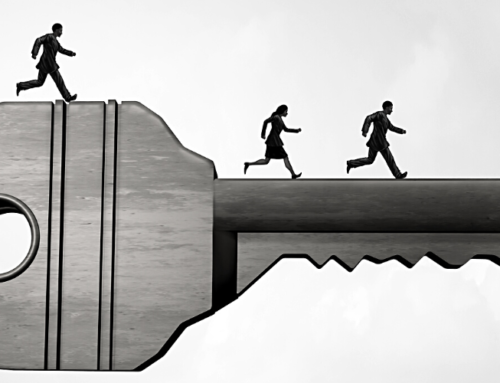Reading time: 6 mins
Translating clinical trial documentation is a complex task that requires a deep understanding of the subject matter and the target audience. The process involves translating patient-facing materials, such as informed consent forms and instructions for patients and carers, as well as healthcare provider-facing documentation, such as clinical trial protocols. To ensure that the information is effectively communicated to readers, it is essential to select translators with the appropriate skills and expertise.
This article will discuss the importance of translating clinical trial documentation with the reader in mind. We will also present a case study of a challenging translation project we have taken on for one of our pharmaceutical clients. The project’s scope was significant, and the clinical trial documentation had two vastly different target readers – healthcare professionals on the one hand, clinical trial participants, their family members, and carers on the other.
Target readers with different needs and levels of understanding
Patient-facing materials such as informed consent forms and instructions for clinical trial participants and their carers need to be translated by someone well-versed in marketing translation who also has a strong sense of style and tone. These texts need to be straightforward, engaging, and easy to read. But they still need to be accurate.
Healthcare provider-facing documentation, such as clinical trial protocols, requires a different level of expertise. Considering their target reader, these materials are very technical. In this case, it is crucial to have a highly specialised medical and pharmaceutical translator with proven industry experience. This translator will be able to accurately convey the technical information in the clinical trial protocol while ensuring that the terminology used is appropriate for the target audience.
Case study: one clinical trial, two target readers, two translators
One of the biggest challenges we faced when translating clinical trial documentation was a project that was complex due to a combination of factors. They were:
- a substantial project scope: more than 120 translation pages (over 30 thousand words); this is a tall order considering the complexity of the subject matter,
- a relatively short timeline: less than three weeks, and
- texts with vastly different target readers: healthcare professionals, clinical trial participants – from as young as six years old to adults – and their family members or carers.
All these three factors combined meant that our turnaround time needed to be short and the translations on point in terms of terminology and style. We needed to make sure:
- the clinical trial team knew what they have to do and how,
- the subjects were aware of the treatment they would undergo and what they would need to do, and
- their carers knew what they could expect to be going on with their loved ones.
There was no room for mistakes or awkward translations.
After a quick deliberation, we devised the following plan, which ultimately led to high-quality translations being delivered on time:
1. We assigned two translators to the project.
One was highly knowledgeable in the medical and pharmaceutical industry and took over the healthcare provider-facing documents. The focus here was to provide as precise and terminologically correct translations as possible to avoid any life-threatening errors on the part of clinical trial personnel.
We chose the second translator because we knew they had experience with medical and pharmaceutical translation, but more importantly, also a sharp sense of style and tone. They could express nuances of meaning and engage readers of any age, regardless of their message. We assigned this translator all the patient-facing documentation to ensure the most sensitive trial details were communicated clearly and with empathy.
2. We assigned one reviser to the project.
This person checked that the terminology used within documents of the same type was consistent and that the translations were complete and grammatically correct.
3. The revision was done in parallel with the translation.
This way, translators got early feedback on the quality of their output, which enabled them to tweak it as necessary as they went along, ultimately improving the first draft of the translations that were sent to the reviser.
4. All translated texts, especially the patient-facing ones, were read through by the project manager, who assessed them with the target reader in mind.
This enabled us to step into the readers’ shoes and ensure we were communicating with them in the right way. This process was so successful that we could spot some semantic issues in the source texts, proposing changes to the client and thus helping them avoid problems with the execution of the trial.
In short, splitting the translation of these texts between translators with different skills and expertise is crucial to ensure that the result is tailored to the target reader in terms of both style and terminology. This is particularly important in clinical trials, where the communicated information is technical, complex, and often emotionally taxing.
How to choose the right translation agency
When discussing clinical trial translation services, it is essential to work with a translation agency that specialises in medical and pharmaceutical translations. These agencies will have a team of experienced translators familiar with the specific terminology and style required for clinical trial documentation. They also have a deep understanding of the regulations and guidelines that govern clinical trials, and they can help ensure that the translations comply with these regulations.
Suppose you are searching for a professional translation agency to help with your clinical trial documentation. In that case, it is vital to look for one with a proven track record. The agency should have a team of medical and pharmaceutical translators with considerable experience translating clinical trial documentation and understanding the specific requirements. To ensure such translators work on your documentation, feel free to ask for their references (agencies should be able to provide you with blind CVs) to gain insight into their education and experience level.
By using translators with different skill sets and expertise, it is possible to effectively communicate the information to the target audience in a way that is tailored to their needs. This ensures that the resulting translation is accurate, clear, and easy to understand for all parties involved in the clinical trial. Alamma has been a trusted language services partner translating clinical trials for almost two decades – do not hesitate to contact us for more information!
This post is also available in:
![]() Slovenščina
Slovenščina







Leave A Comment